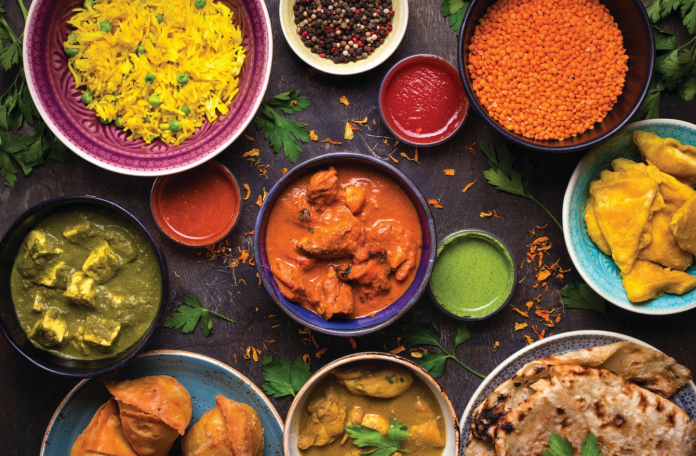
It’s September, and for most Americans, the eating frenzy of the holidays is still safely out of mind, tucked far off into the future somewhere behind Halloween and Thanksgiving.
For many American Hindus, however, holiday season—and the eating that it brings—begins in fall with multi-day festivals like Navarathri and Diwali.
Across the Bay Area, these festivals bring Hindus together in celebratory gatherings. While people flock to the growing number of Hindu temples, the most anticipated events are the parties at friends’ houses.
In houses from Santa Clara to Marin counties, metallic designer sandals are kicked off at travertine tiled entryways. Inside, the party is a riot of richly colored textiles and glittering jewelry as guests use the party as an excuse to don their otherwise neglected Indian party clothes. Guests greet friends who they haven’t seen since the last holiday season, speaking in dialects they rarely use anywhere else.
As with all celebrations, the centerpiece is the food, and it’s secret ingredient is generosity. If Indian food is already known for it’s richness, the special foods that accompany Indian festivals even more so. Cultural norms further dictate that a generous host will encourage guests to eat to excess, and that a gracious guest will oblige. So, trays of steaming appetizers are circulated, sweet drinks are imbibed, all before a buffet meal that rarely includes fewer than five items.
An unfortunate byproduct of this generosity, of course, is the calories. For most Americans, the season between Thanksgiving and Christmas alone causes an estimated increase in caloric intake by a staggering 2000 calories a day, with the feast days themselves producing a whopping 7000 calories. For American Hindus, who celebrate both old and new cultures, this period of caloric increase is two to three times larger.
Unfortunately, with double the joy comes more than double the trouble. The South Asian community, to which most Hindus belong, has four times a greater risk of heart disease than the rest of the American population. They also have a greater risk for diabetes and are more likely to be “thin-fat”, meaning that though their weight is low on the Body Mass Index scale, they are more likely to have higher body fat percentages.
In short, with this time of year begins the possibility for consuming an inordinately large number of calories. The question then is—just how to navigate this drawn out holiday season? Stay tuned as over the coming weeks and months, we highlight some of the ways in which we can curb holiday eating.
By Neera Siva







